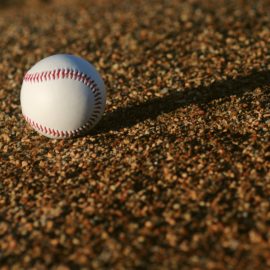
What athletic path will give your child the greatest chance of success? Which sports rely more on genetics, and which ones reward consistent practice and hard work?
Choosing the right sport for your child involves weighing natural abilities against dedication and opportunity. In Don’t Trust Your Gut, Seth Stephens-Davidowitz reveals that diving, weightlifting, and horseback riding reward effort over natural talent, while other sports favor specific genetic traits.
Keep reading to discover how to choose a sport that could lead to athletic scholarships and open doors to college education.
How to Choose a Sport
One decision that children often make themselves (but adults can help encourage) is what sports they might choose to go into. Not all children aspire to be athletes. But, for those who do, Stephens-Davidowitz offers data-driven advice for how to choose a sport. As is often the case, the question comes down to nature versus nurture—or in this case, genetic predisposition versus the willingness to train and work hard. Does a person have to be a born athlete, or can they learn to be one through effort? The statistical answer turns out to be “it depends on the sport.”
(Shortform note: One factor of sports success Stephens-Davidowitz doesn’t cover is that culture determines many children’s athletic path. For instance, in The Sports Gene, David Epstein points out that culture and economics can explain why some sport-specific talents seem to cluster in certain areas, such as Kenya producing so many marathon runners. In Kenya, the prize money from a large marathon is a fortune for the average citizen, so while the same athlete may be good at basketball, training for track and field makes more economic sense.)
Stephens-Davidowitz points to research that tracks different siblings’ athletic success. The numbers show that some sports require the right genes to reach the top, while others are open to anyone willing to learn. Basketball, running, and swimming favor certain genetic traits and body types that align with the mental skills needed for the game, whereas in baseball and football, the genetic factor is smaller. Studies of siblings who qualify for the Olympics reveal that diving, weightlifting, and horseback riding reward effort and training over natural talent more than any other sport. So, as a parent, if your child has aspirations but isn’t “built” for athletics, you might gently guide them to sports they might find more fulfilling.
(Shortform note: The genetic component of athletics isn’t as simple as Stephens-Davidowitz suggests. According to the field of epigenetics, having the right genes isn’t enough because a person’s lifestyle and environment determine how those genes are expressed. For instance, a child may have the basketball gene, but if they grow up malnourished or with little exercise, their bodies won’t develop into their full potential. Epigenetic studies on sports show that the relative impact of genetics (nature) and environment (nurture) is still difficult to untangle.)
But, what does it matter what sport a child goes into? Stephens-Davidowitz argues that professional aspirations notwithstanding, athletic scholarships open many doors to college education. If your child is willing to pursue such a path, a statistical analysis of college admissions reveals which sports offer the greatest opportunities. The most popular sports are, of course, very competitive, and the average high school athlete’s chances for a scholarship are low. However, several less obvious choices offer greater odds because the ratio of scholarships to applicants leans more heavily in a student’s favor. These include gymnastics, fencing, and hockey for boys, and rowing, horseback riding, and rugby for girls.
(Shortform note: The trouble with Stephens-Davidowitz’s “less obvious sports” is that most of them have financial barriers to entry or are only available at elite private schools. In Revenge of the Tipping Point, Malcolm Gladwell examines the relationship between college admissions and less popular athletic fields. What he finds is that young athletes in these sports mainly come from white, affluent families who can afford to have their children participate. Gladwell suggests, therefore, that some schools disproportionately recruit for these sports as a form of “reverse affirmative action” to make enrolling rich white students easier.)






